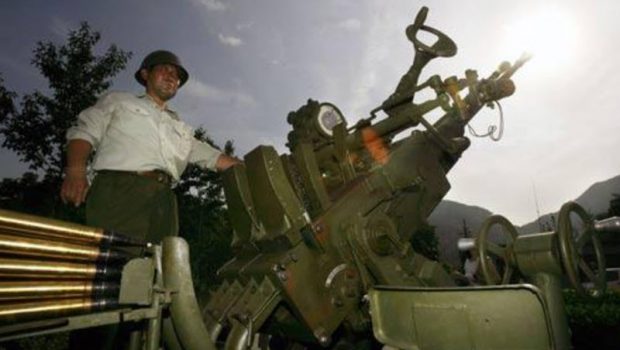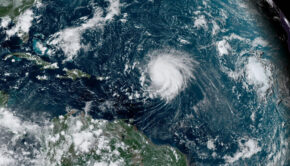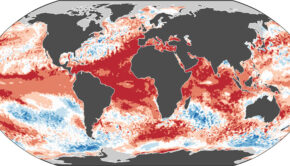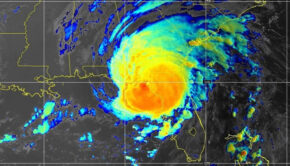Why Technology Can’t Beat Hurricanes
Published on September 27th, 2017
When rain threatened the Opening Ceremonies of the 2008 Olympic Games, the Chinese Government fired rockets into the clouds to avert the downpour. It worked, but as The Washington Post explains, don’t expect a similar tactic to diffuse the impact of hurricanes.
Predicting where a hurricane is going to go, when will it get there and how strong it will be when it arrives is a challenge. But one hurricane-related prediction is easy: If a storm is about to make landfall, the National Hurricane Center will be flooded with emails and letters filled with ideas to stop or weaken a hurricane.
“Whenever there is a landfalling U.S. hurricane event, I receive many emails from the public with ideas to get rid of hurricanes,” says Dennis Feltgen, the public affairs officer at the National Hurricane Center in Miami.
Harvey and Irma kept him especially busy with suggestions:
• Maybe we should cool the water where a hurricane is likely to form.
• If it’s already developed, maybe we should try blowing it up.
• Perhaps a nuclear bomb would work.
The good-intentioned letter-writers often don’t recognize the power a hurricane — or even a tropical storm — produces. Specifically the latent heat a hurricane produces is an unbelievable amount of energy. Latent heat is released when warm air rises, cools and condenses into water drops or ice crystals.
It’s also difficult to grasp, and even know the extent of, the repercussions of changing the environment where the hurricane is expected to track.
The power of a hurricane
“Hurricane Andrew struck South Florida in 1992, the eye and eyewall devastated a swath 20 miles wide,” NOAA writes. “The kinetic energy of the wind at any instant was equivalent to that released by a nuclear warhead.”
In other words, in any given moment, the power of a Category 5 hurricane is as much as a nuclear warhead. A bomb would be a pinprick to a hurricane.
In fact, lobbing a nuclear bomb into a hurricane would do nothing but create a radioactive hurricane. All of the rain would be radioactive, and the storm surge would be radioactive too. Not to mention the ocean itself — lots of radioactive marine life.
People would need shelters not only from wind and rain, but from fallout.
Of course, this fact hasn’t stopped people who should know better from suggesting we should “nuke them.”
Edward Teller (1908-2003), a nuclear scientist known as “the father of the H-bomb,” suggested more than once using nuclear bombs to either weaken hurricanes or keep them from forming. He was good at finding things to do with nuclear “devices” such digging canals or for strip mining.
Changing the environment
Many suggestions advocate cooling the water a hurricane is going to travel over. This makes intuitive sense, since hurricanes need warm water to form and strengthen. But the idea has several weaknesses.
First, although forecasts have improved remarkably in the past couple of decades, we wouldn’t know what part of the ocean to cool. Forecasters would have to know exactly where a storm would track to invest the incredible amount of money and energy it would take to cool such a large area of ocean.
Environmental effects are probably the biggest concern. Sea life has evolved to live in certain temperatures. Cooling a large part of the oceans could wipe out some fisheries.
Also, most parts of the world depend of rain from evaporated seawater. Would cooling a large area of the reduce precipitation over downwind areas?
How about cloud seeding?
Another common suggestion is cloud seeding, in which tiny particles are injected into the atmosphere to change where clouds and rain form. This is a straightforward method of weather modification that’s useful in specific cases — like drought and snow creating — but has little effect on hurricanes.
The first proponent of cloud seeding was Irving Langmuir (1881-1957), the chief scientist at General Electric and a Nobel Prize winner in chemistry. GE scientists had invented ways to use dry ice and later silver iodide to encourage clouds to produce more rain or snow that they otherwise might have.
The GE scientists actually attempted cloud seeding on a hurricane on Oct. 13, 1947, when an Air Force B-17 bomber dropped 180 pounds of shaved dry ice into a hurricane over the Atlantic Ocean roughly 350 miles northeast of Jacksonville, Fla.
Another B-17 took photos and a B-29 acted as the control aircraft. Those aboard the planes saw no noticeable changes in the storm. Langmuir never published anything providing a hypothesis for his many claims about how cloud seeding would work.
After the seeding airplanes left the storm, which had been heading toward the northeast away from land, it turned toward the west and came ashore north of Savannah, Ga., where it killed one person and did an estimated $3.26 million in damage before dissipating over southern Alabama.
All in all, it probably makes more sense to learn to safely live with hurricanes than try to destroy or change them.









 We’ll keep your information safe.
We’ll keep your information safe.